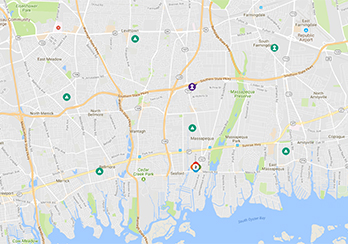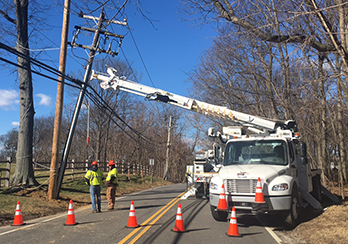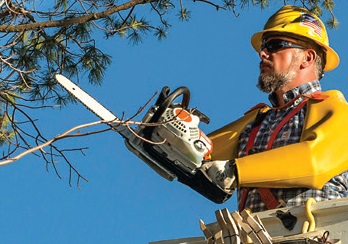Before a Storm
Protect Your Family and Your Home
Stay connected. Be prepared. When severe weather is predicted, we recommend planning ahead in case the power goes out.
Create an Emergency Kit
- Get a battery-powered radio, alarm clock, flashlights and extra batteries.
- Stock up on bottled water and nonperishable food.
- Charge your cell phone and other electronic devices.
- Include a hand-operated can opener.
- Add a few extension cords (for partial power outages).
- Build a first aid kit (Visit the American Red Cross for ideas on what to include in a basic kit.)
- In the winter, keep a pile of blankets handy. If your home has a fireplace, clean the chimney of debris and stock some firewood.
Prepare for Power Outages
- Charge your phones, tablets, and other mobile devices.
- If you have a landline, ensure you have a corded phone. Cordless phones don't work when the power is out.
- Know how to open your garage door without electricity.
- Know how to reset your home's security system when power returns.
Prepare for Wind or Flooding
- Secure outside objects like garbage cans and patio furniture.
- Put sandbags around areas of your property that are prone to flooding.
Prepare Your Business
Weather emergencies don’t always give us a heads up. Plan ahead for emergencies to reduce stress when bad weather strikes.
For Your Business
Develop a communication plan before severe weather hits.
- Update all employee contact information.
- Locate and post evacuation routes closest to your business.
- Create a communication tree to stay in touch with your employees before, during, and after a serious storm.
- Develop a phone, text, or email chain to check in with employees after an evacuation
- Designate someone to contact employees' family and friends in case you can't contact your employees direction.
- Establish pre-arranged meeting points if cell/phone communication is cut off.
Protect Your Assets
To minimize damage:
- Check for and repair loose roofing and siding.
- Trim dead or broken branches from trees and shrubbery near your building.
- Move equipment away from windows.
- Unplug electronics to protect from destructive power-surges.
- Create or update your disaster supplies kit; consider purchasing a battery-powered radio or National Weather Service weather alert radio.
- Evaluate the practicality of installing a standby emergency generator. If you have one already, test it and stock up on fuel.
Preparing for the Worst
To help your business resume normal operations, create a business continuity plan. You may also want to:
- Review insurance policies and consider adding business interruption insurance or flood insurance.
- Take photos or video of property and equipment.
- Back up important data to the cloud or external drives; store important papers in a fireproof safe within your building.
- Prepare a list of disaster recovery services vendors relevant to your needs.
- Only return to your business after it's safe to resume travel.
Minimizing Damage From Severe Weather
PSEG Long Island prepares for strong storms long before they are predicted.
PSEG Long Island: Storm Ready
Since we often know about severe weather in advance, we've developed a solid plan to prepare for damaging storms and respond to widespread power outages. Before the storm arrives, we:
- Activate more personnel to handle increased demands.
- Add contractors, including tree crews to supplement our workforce.
- Increase our supply of poles, transformers, pole-top equipment, and other items.
- Prepare staging areas for extra crews and supplies.
- Verify that our fleet of trucks is fueled and ready to go.
- Test back-up generators at utility locations.
- Identify locations, like substations, prone to flooding and use sandbags to redirect storm water and debris.
- Update county (Offices of Emergency Management (OEMs) on outages and restoration efforts.
- Coordinate with critical customers, including hospitals and airports.
- Communicate frequently with customers with status updates.
Lightning Detection Network
Before a storm reaches our service area, we're already tracking its movement. The Lightning Detection Network uses information from independent weather forecasters and the National Weather Service to scan the entire East Coast for lightning activity. We then work with county, state, and NYC emergency management offices to anticipate storm impact on Long Island.























